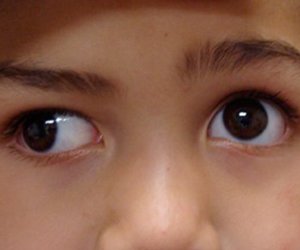A squint, or strabismus, is a condition in which the eyes do not align properly. One eye turns inwards, upwards, downwards, or outwards, while the other one focuses at one spot.
It can happen all the time or intermittently.
This usually occurs because the muscles that control the movement of the eye and the eyelid, the extraocular muscles, are not working together.
What is Squint?
A squint, or strabismus, is a condition in which the eyes do not align properly. One eye turns inwards, upwards, downwards, or outwards, while the other one focuses at one spot.
It can happen all the time or intermittently.
This usually occurs because the muscles that control the movement of the eye and the eyelid, the extraocular muscles, are not working together.
As a result, both eyes are unable to look at the same spot at the same time.
It can also happen because a disorder in the brain means that the eyes cannot correctly coordinate.
Strabismus also makes binocular vision impossible, so it is harder for the person to appreciate depth perception.
Symptoms
Symptoms of squint are often difficult to detect. People often mistake unusual look of the eyes as squint. Children may often complain about vision problems. In case the problem is squint, a specialist should be consulted. The common symptoms could include:
- Blurred vision.
- Lazy eye (amblyopia) can develop: A condition where brain ignores signals.
Causes
The major causes of squint are either a nerve injury or dysfunctioning of the muscles controlling the eyes. Though the cause of squint is not clear, a person is more likely to develop it. The possible causes are:
- Congenital squint – a family history of squint.
- Long sight – develops as the eyes ‘over-focus’ in order to see clearly.
- Childhood illnesses – develops following an illness such as measles or chickenpox.
- Nerve damage – a difficult delivery of a baby or illness damaging a nerve.
Risks
The main risks of the disease include:
- Double vision errors.
- Retinal detachment.
- Blurred vision.
- Infection after the surgery.
Prevention
In order to prevent the occurrence of the disease, one should take care of the following things:
- Closing the eyes and resting after each set of 4 repetitions.
- Moving the eyes as far up and to the right.
- Finding a point in the vision to focus on and count one breath.

